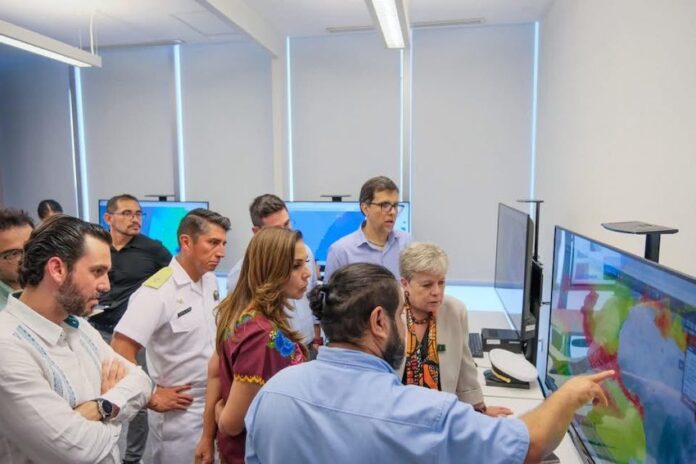A new facility to monitor and manage sargassum along Mexico’s Caribbean coast — and eventually convert it to biofuel — was announced Saturday by Quintana Roo Governor Mara Lezama.
Work to contain and collect the noxious seaweed has already begun in preparation for the Comprehensive Sargassum Sanitation and Circular Economy Center, as the new facility is named. Lezama first revealed plans to create the Sargassum Center in February.
¡En Quintana Roo convertimos los pasivos ambientales en activos económicos!
Junto a la secretaria de Medio Ambiente, @aliciabarcena, presentamos el Centro Integral de Saneamiento y Economía Circular del Sargazo, un proyecto visionario que impulsa el desarrollo sostenible y la… pic.twitter.com/rExFlKqosa
— Mara Lezama (@MaraLezama) July 5, 2025
The new project will support the monitoring, management, collection and transportation of sargassum, in addition to treating wastewater and producing biomethane from organic waste and sargassum, according to Lezama. Plans include the installation of three new wastewater treatment plants in Cancún’s hotel zone.
The aim is to turn “environmental liabilities into economic assets,” Lezama said.
Annual expenditure on sargassum management is equivalent to 11% of the local GDP, or US$2 billion (37.4 billion pesos), according to the governor.
Lezama expects the new project to promote new sustainable industries, create jobs and reduce the environmental impact of the sargassum.
In June, scientists predicted that record levels of sargassum were likely to wash up on Quintana Roo through the summer.
“Every year we face this challenge, and that is why, in Quintana Roo, we are taking concrete actions to protect our beaches, our economy and the thousands of families that depend on tourism,” Lezama said.
Though the brown seaweed is naturally beneficial to marine ecosystems in the open ocean, it can be harmful to marine life, plants, coral and human health when large quantities reach the coast. As it decomposes, it gives off a foul smell similar to rotten eggs.
Lezama highlighted the joint efforts taken by the Navy, the state government, municipal authorities and civil society to remove almost 40,000 tons of sargassum in the region in 2024.
Is sargassum a problem today along the Quintana Roo coast? Yes and no
A Dutch consortium consisting of Dutch Clean Tech and the engineering company Oceanus International will be responsible for the financing, design, construction and operation of the Sargassum Center.
The consortium aims to incorporate cutting-edge Dutch and Mexican technology into operations for the biodigestion of sargassum and organic waste, as well as to produce biomethane.
Results from a study on sargassum, sludge and EMR valorization, endorsed by the certifying agency Aenor-Mexico, are due to be released in November. The study’s findings are being used in the development of the sargassum center.
The new center is expected to be a benchmark for research, innovation and coordinated action to solve the sargassum problem efficiently and responsibly, according to the state Minister of Ecology and the Environment Óscar Rébora.
With reports from Infobae, El Economista, Reportur, Riviera Maya News
